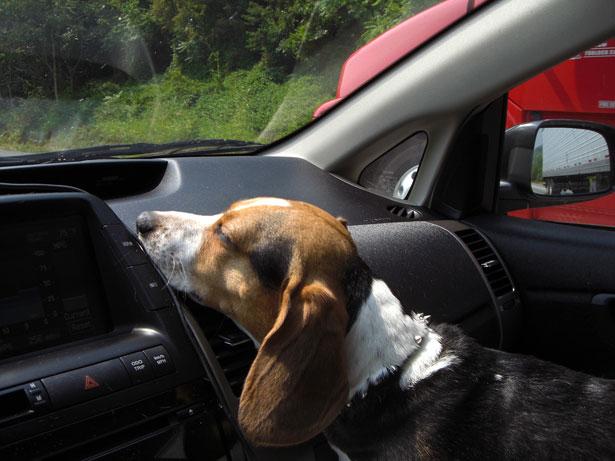
Road Trips
Friday, June 5, 2015
Veterinary Viewpoints
Many people like to take their pets on vacation. My family has spent many camping vacations with our dogs. It’s fun to hike and canoe with our dogs. They seem to enjoy the new scenery as much as we do.
However, there are destinations when my dogs stay home. Family or friends watch over them or they are boarded. The same goes for my cats—they stay with a house sitter or are boarded.
If you are traveling this vacation season, here are some tips to keep in mind.
If you are visiting a home with pets, adding your dogs or cats to the mix might create problems.
It might be more comfortable for your pet to stay home if you are spending more time driving than at your destination. Also, if your pet does not travel well, leaving it at home is usually best.
Take some practice trips around town to see how pets adjust to car travel in a crate. Familiarize them with the crate by feeding them or offering treats in the crate.
Always use a crate for cats. Cats are excellent at escaping and it is very hard to get them to come when called at a gas station or rest stop.
Dogs may be more comfortable sleeping in their crates. If your dog is comfortable in the car, you may choose to use a travel safe harness.
Even though dogs love having their head out the window, this would be like you riding a motorcycle without goggles. It exposes them to debris which can enter their eyes, nose and ears causing injury or infection—keep all heads inside the vehicle.
Limit meals before leaving on a trip. Traveling on a nearly empty stomach avoids accidents and may prevent upset stomachs. If your pet needs medication to help with travel anxiety, consult your veterinarian to discuss your options.
When traveling out of state or crossing the border into Canada or Mexico, owners need to have a health certificate for pets. The form needs to be filled out within a specified number of days of travel (usually 10 to 14 days).
Microchip and tag your pets so they can be identified if they escape. A tag on their collar can list your cell phone, contain current vaccinations, and the name of your veterinarian. Always be sure your dog is wearing its rabies tag. A microchip will provide a permanent ID if the pet slips its collar.
Before you travel, locate pet-friendly hotels. If you need to leave your pet in the hotel room, minimize the amount of time your pet will spend unattended and crate your pet.
If you leave your pet in the room, notify the front desk and leave a “Do Not Disturb” sign on the door. Be sure to leave your contact information with the front desk in case of an emergency. Never leave your pet alone in a parked vehicle.
Here are some helpful items to bring along from home:
- Water—pets can detect small changes in the taste of water. Bring bottled water from home or store bought water.
- Medications—bring any medications including heartworm, flea and tick medications if needed.
- Medical records—if you need to suddenly board your pet, you may need to present a copy of your pets medical records.
Traveling with pets is a bit like traveling with small children. They appreciate it when you stop every two hours for exercise and a potty break. And don’t expect them to drive all night.
by Elisabeth J. Giedt, DVM
Veterinary Viewpoints is provided by the faculty of the OSU Veterinary Medical Hospital. Certified by the American Animal Hospital Association, the hospital is open to the public providing routine and specialized care for all species and 24-hour emergency care, 365 days a year.
###
